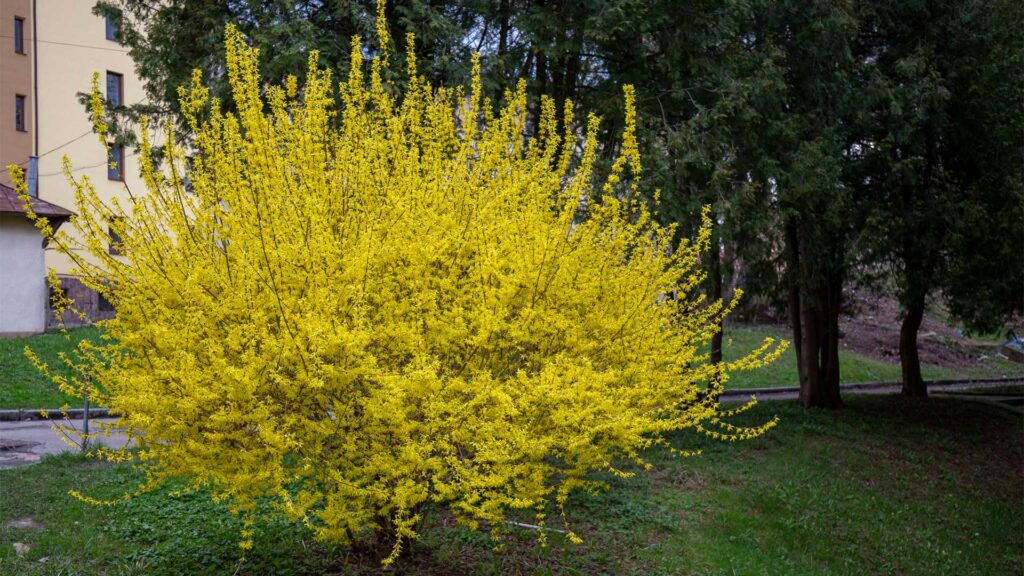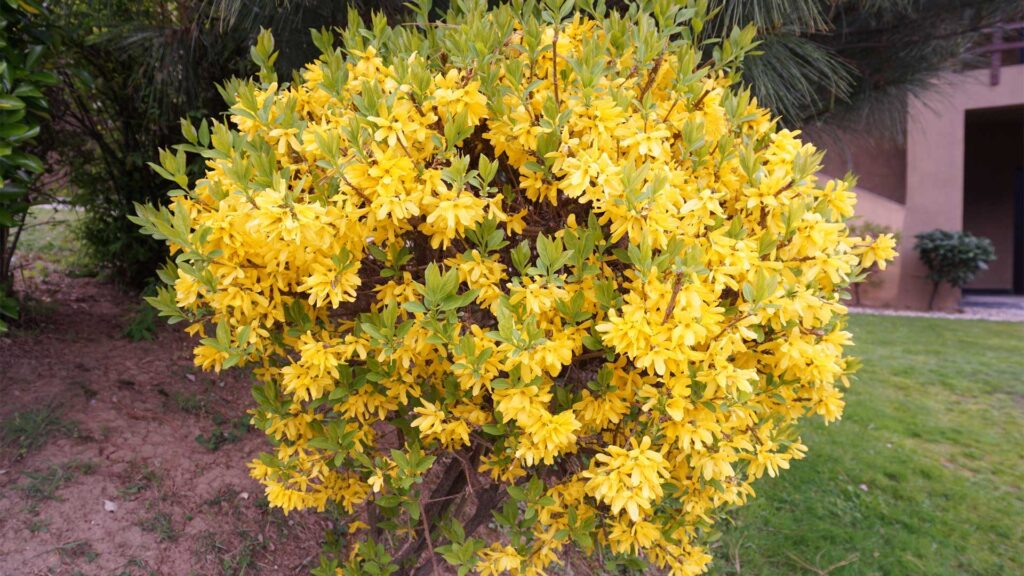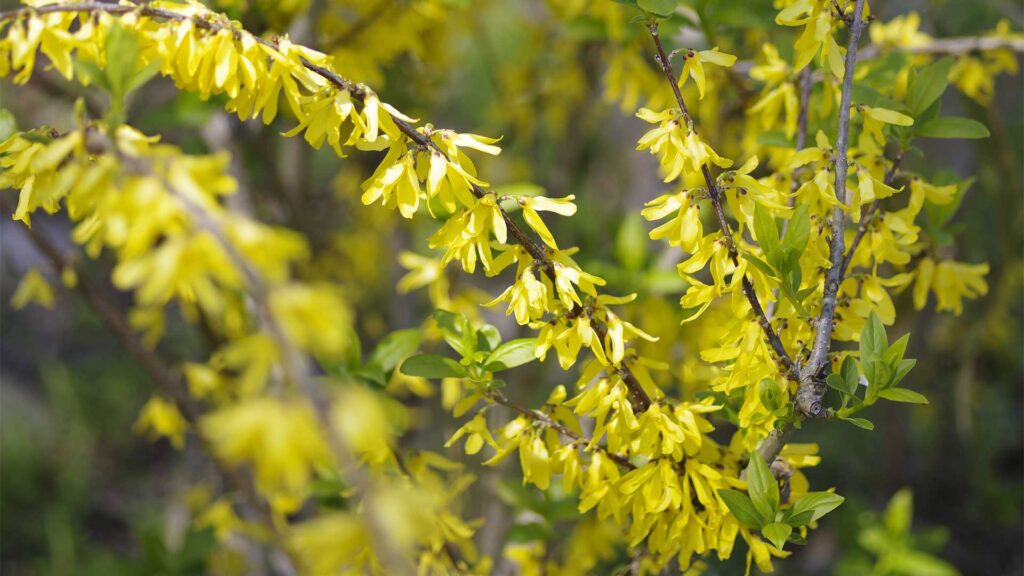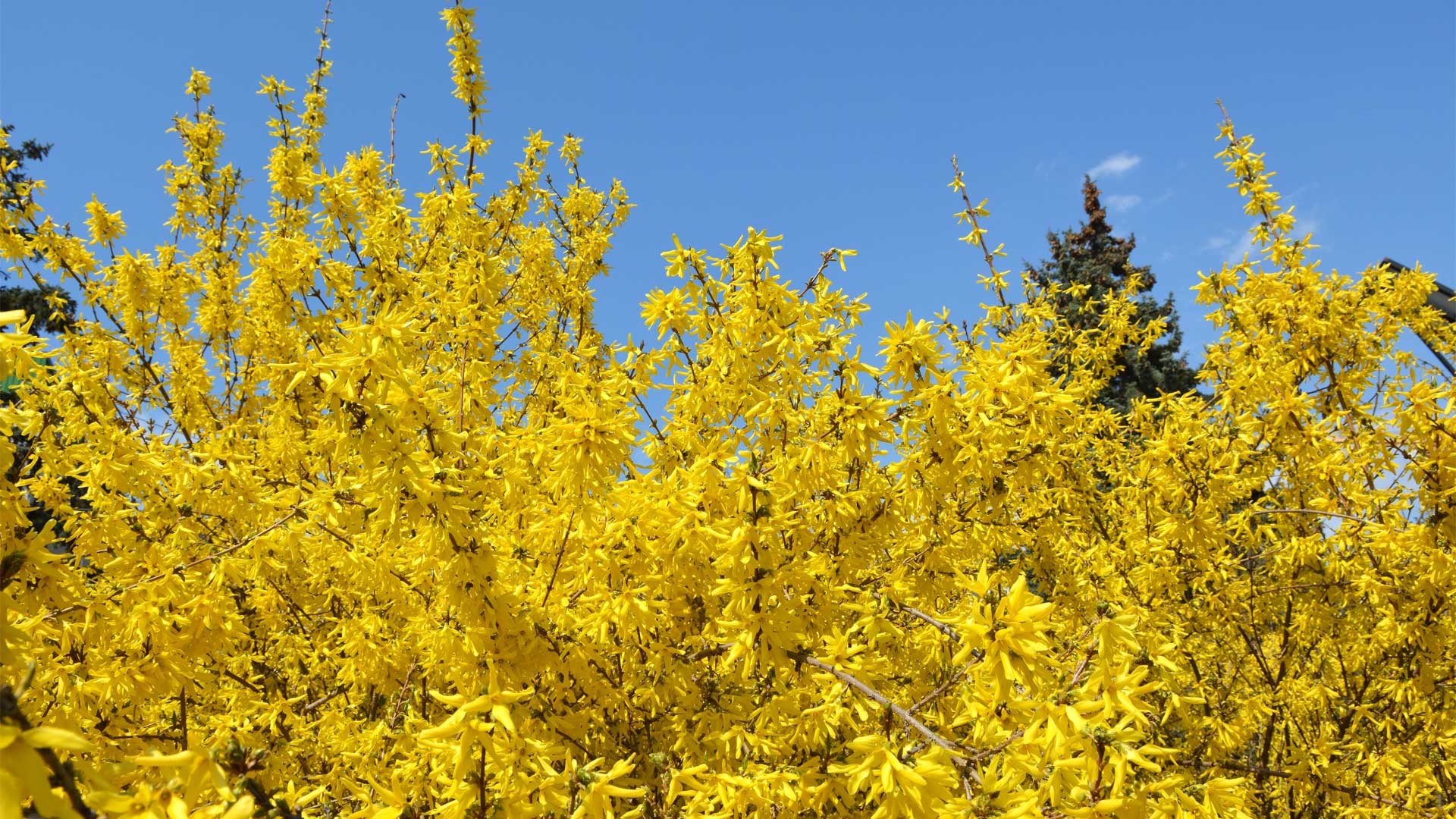As winter seems to linger endlessly, bring sunshine to your garden with one of the first shrubs to bloom in our regions. When spring arrives, nothing compares to witnessing nature come back to life and gradually fill with color. Forsythia is a shrub known for its vibrant yellow flowers. As soon as the last snow melts, its blossoms emerge, delighting pollinators in search of nectar when few plants are in bloom.
Although its green foliage can be unremarkable in summer, forsythia is beloved in landscaping for creating beautiful contrasts as spring begins. It adds body and structure to flower beds and can stand alone beautifully in the landscape.
Belonging to the Oleaceae family, forsythia is native to East Asia, with some species found in Eastern Europe. It can reach heights of 1.5 to 3 meters (5 to 10 feet) and can spread just as wide, so spacing is crucial when planting.

Often used in hedges, it can also be found in flower beds, rock gardens, and even in pots, depending on the variety and cultivars. For example, Forsythia x intermedia is a hybrid species, the most common in gardens, known for its vigorous growth and bright yellow flowers.

Meanwhile, Forsythia suspensa, also known as weeping forsythia, has drooping branches and is often used as a cascading plant over walls.

Forsythia viridissima features greenish-yellow flowers, which are less striking than others but interesting for color mixing. For smaller spaces, there’s a dwarf variety, Forsythia x intermedia ‘Minigold.’
The King of Hardiness
Forsythia thrives in cold conditions; it is said that the Siberian temperatures sometimes experienced during Quebec winters enhance its blooming. Well-adapted to cold climates, it can easily withstand temperatures as low as -25°C.
Forsythia prefers well-drained soils that are slightly acidic or neutral. For optimal flowering, plant the shrub in full sun. It can also thrive in partially shaded areas, but expect its flowers to be less vibrant.
Once established, forsythia is quite drought-resistant, but it shouldn’t be neglected; regular watering is beneficial. Although it’s not particularly nutrient-demanding, a balanced fertilizer applied in early spring can promote growth.
While resistant to diseases and pests, planting in poorly drained areas could impact its health, leading to fungal diseases like anthracnose.
Spring Pruning
Pruning forsythia is usually done at the end of spring or early summer, right after blooming. This allows new shoots to develop and bear flowers the following year.
It’s advisable to cut back about a third of the old branches to the ground each year to encourage vigorous new growth. This is a good way to maintain an attractive shape and prevent the shrub from becoming too overgrown. You can shape it for a more formal hedge or leave it natural for a more relaxed effect.
After its spring blooms and pruning, forsythia develops green leaves that last until autumn before falling. With proper pruning, the growth of new branches is vigorous. The shrub can live for several decades and often becomes more spectacular with age, as older stems tend to produce more flowers.
The Origins of its Name?
This shrub is named in honor of the 18th-century Scottish botanist William Forsyth, one of the founders of the Royal Horticultural Society. Introduced to Europe in the early 19th century, it quickly became popular in gardens for its abundant and early blooms.
In fact, cut a few branches in February or March, place them in a vase with water, and within one or two weeks, you’ll see them covered in beautiful yellow flowers. Visit us to choose the new forsythia that will bring sunshine into your life!






